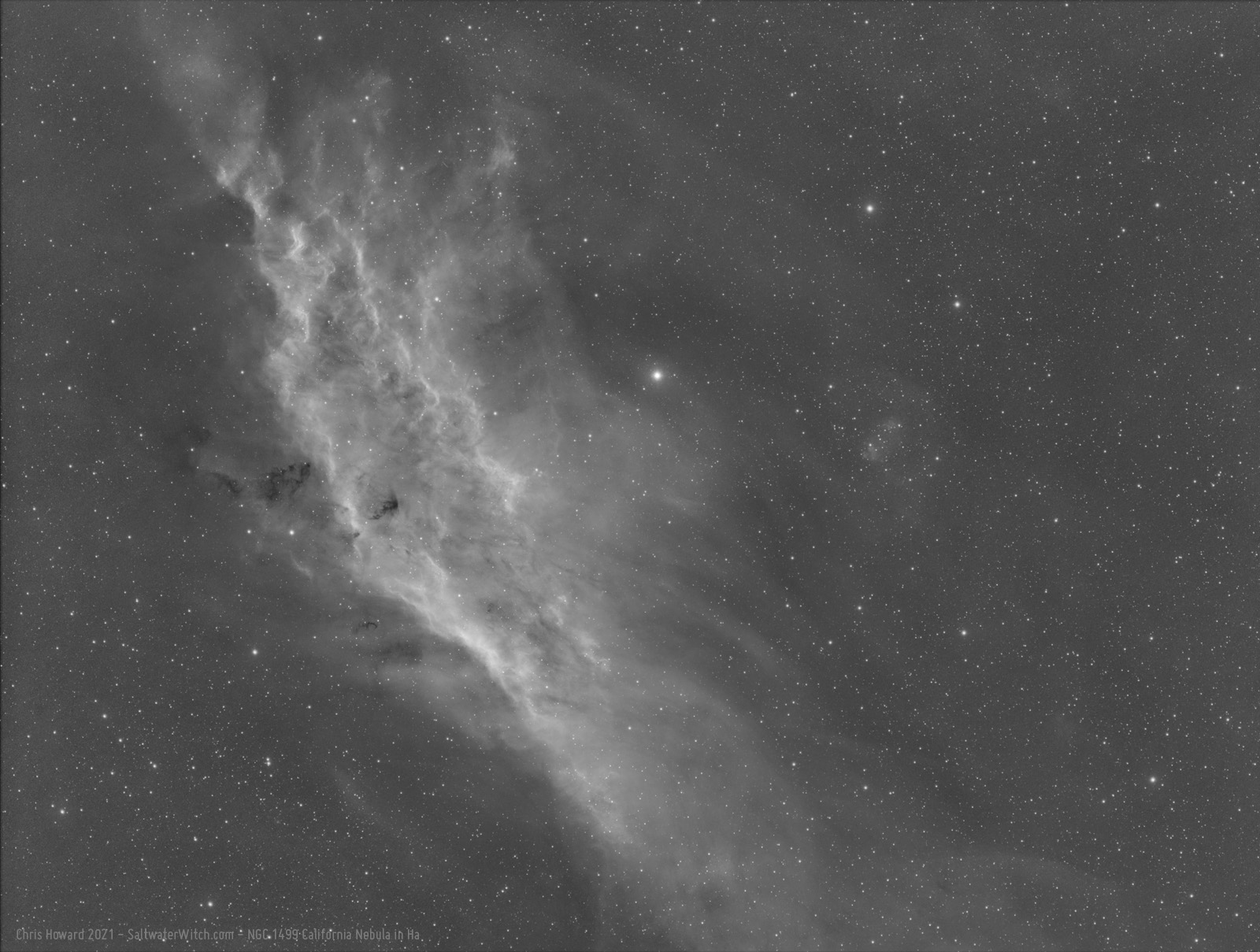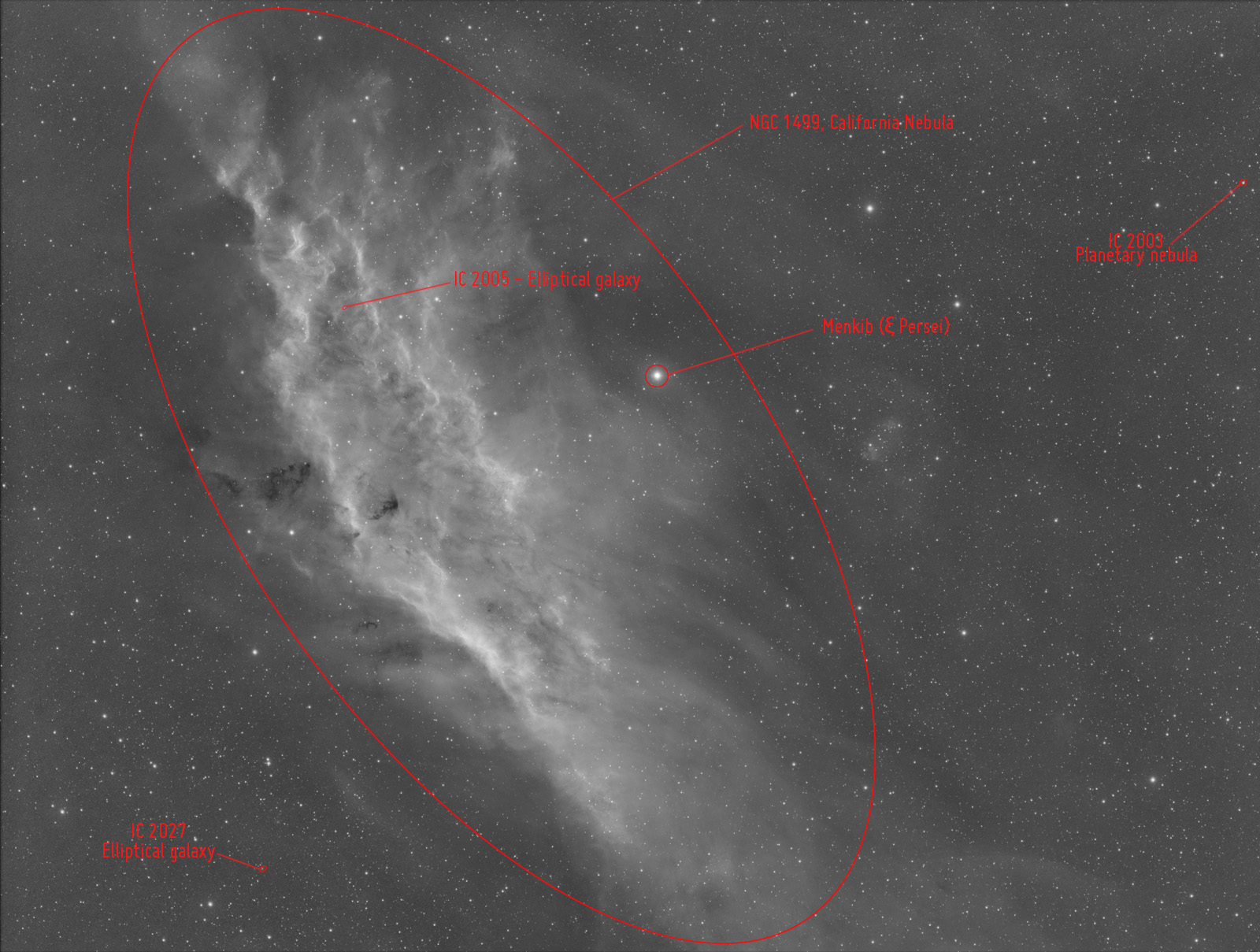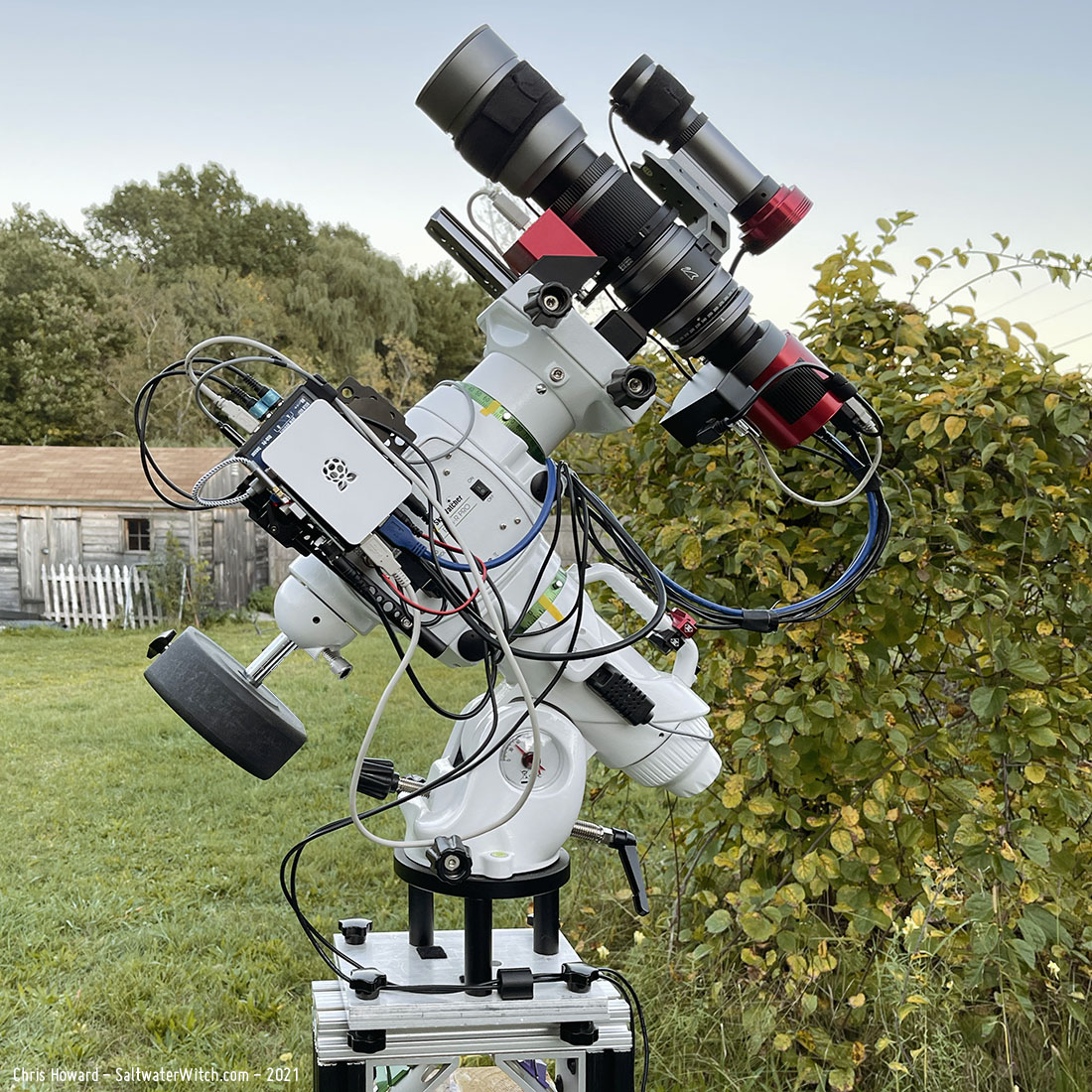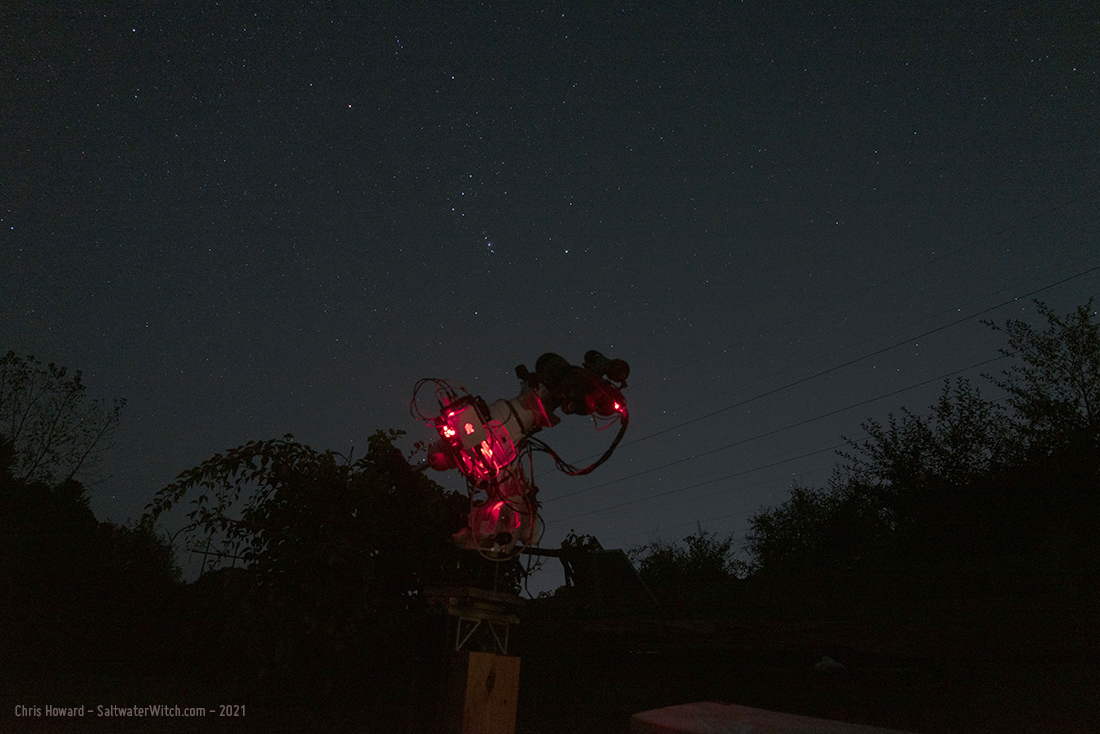NGC 1499 in Hydrogen-alpha
October 8, 2021
I started another narrowband imaging run of the California Nebula (NGC 1499), this time in 3nm. Here's my first pass of 100 x 240-second sub-exposures in hydrogen-alpha (Antlia 3nm Ha filter) with my ZWO ASI1600MM-Pro monochrome camera and William Optics SpaceCat 51 Refractor (250mm FL @ f/4.9).

Some notes on the image below:
NGC 1499, the California Nebula, is a large HII region and star-forming cloud in the Constellation Perseus. Its 100 lightyear length is roughly shaped like the State of California—I mean, you can see the San Joaquin Valley, the Sierras and where the land angles in for southern California and the L.A. Basin. So, the name fits the shape. NGC 1499 is east of the Perseus Molecular Cloud, a large star-forming region surrounding the star clusters, IC 348 and NGC 1333, but also includes a bunch of hot O-type stars on their own. The HI supershell in Perseus, a broader backdrop of atomic hydrogen and helium, encompasses the molecular cloud as well as the California Nebula. Almost every nebula I have ever imaged is within our galaxy, the Milky Way, but what's interesting with NGC 1499 is that our solar system and the California Nebula are both in the Orion Arm of the Milky Way, about 1200 lightyears apart. It's just up the galactic street from us. We're practically neighbors!
The O-type blue-giant star Menkib (the Bayer designation is ξ Persei) is 12,700 times brighter than our star, the Sun, and it's 30 times the mass. It's also seriously hot with a surface temperature around 35000 degrees kelvin. Compare that with 5778 k surface temp of the Sun. There's evidence that Menkib is a "runaway star" based on it's abnormally high radial velocity, which means it is moving away from its stellar association—where it originally formed—in a calculable direction and at an unusually high speed, as if it was ejected by some stellar event or disruption (e.g. gravitational interactions with other stars, supernova explosions, usually something violent and large-scale). The intense radiation from Menkib has carved out the hollow on one side of the California Nebula while lighting up (ionizing) the roughly 900 trillion kilometers of dense clouds of molecular hydrogen. Menkib is continuously bathing all of this hydrogen in radiation, and this is where ionization steps in to help us with our imaging. Electrons get a bit excited with all this loose energy about, and individual ions will lose electrons in the process. In this short-lived energized state a hydrogen molecule is unstable, and when an electron inevitably drops back into a stable position, its ground state, this transition energy causes a photon, a particle of light, to be released in the corresponding wavelength. That's the ionization part, but it's these photons, traveling 1200 lightyears, that we pick up with the digital sensors in our cameras. The simplest definition of astrophotography is catching photons from distant objects, usually either generated or reflected by them.
The elliptical galaxy IC 2005 is just a tiny smear of light in the East Bay area of the California Nebula. It's 279 million lightyears away us, but it's still bright enough to shine through the dense clouds of ionized hydrogen that make up NGC 1499. IC 2005 is 30,000 light years in diameter and it's moving away from us at just over 5800 kilometers per second, about 1.9% of the speed of light.
IC 2027 is an elliptical galaxy in the Constellation Perseus, about 287 million lightyears from our galaxy.
IC 2003 is a planetary nebula in Perseus, about a light year in diameter and 12,000 light years away, roughly halfway between us and the edge of our Galaxy.

Here's my astro setup for the last couple nights, my wide-field narrowband rig, with the William Optics SpaceCat 51 APO refractor and the ZWO ASI1600MM-Pro monochrome camera, ZWO electronic filter wheel and autofocus. Sky-Watcher EQ6-R Pro equatorial mount. Controller: Raspberry Pi 4 4GB running INDI/Ekos/KStars.

It was nice to finally have the new moon line up with some clear night skies! I'm shooting the Rosette Nebula in Monoceros, right next door to Orion, which I love seeing in the sky.

